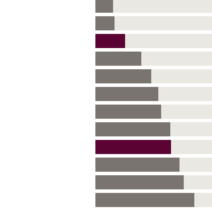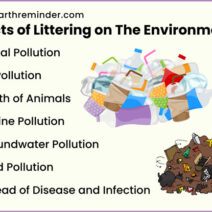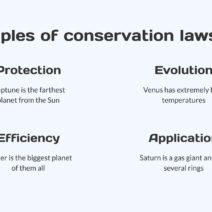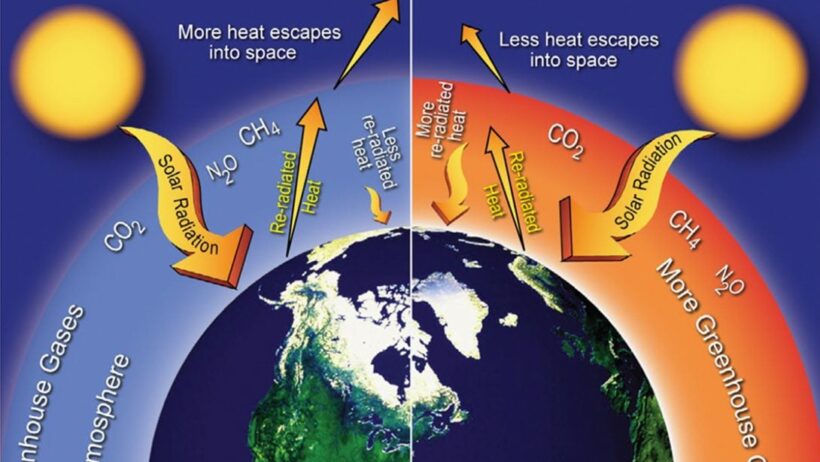Global warming is a pressing topic that encapsulates a myriad of environmental, social, and economic issues. One of the pivotal factors underpinning global warming is radiation and its intricate relationship with heat. This analysis seeks to elucidate the various forms of heat that global warming amplifies, thereby impacting our climate and ecosystems.
To comprehend how global warming increases heat, one must first examine the foundational principle of radiation. The Earth receives energy from the sun primarily in the form of solar radiation. This incoming radiation comprises different wavelengths, including visible light, ultraviolet (UV), and infrared (IR) radiation. The Earth’s surface absorbs a significant portion of this incoming energy, transforming it into thermal energy, which we experience as heat.
However, not all forms of radiation contribute equally to global warming. Ultraviolet radiation, while crucial for synthesizing vitamin D and fostering life, can also perpetuate negative effects, such as skin cancer and ecological disruption. The increased absorption of UV radiation, caused by the thinning ozone layer—exacerbated by human activities—has wide-ranging implications for both human health and environmental integrity.
Infrared radiation, on the other hand, is significantly more relevant in discussions about global warming. The Earth emits infrared radiation back into space after absorbing solar energy. The crux of global warming lies in the greenhouse effect: certain gases in the atmosphere, known as greenhouse gases (GHGs), trap heat by absorbing and re-emitting infrared radiation. The prevalent GHGs include carbon dioxide (CO2), methane (CH4), and nitrous oxide (N2O). Their pervasive presence intensifies the natural greenhouse effect, leading to an enhanced warming of the planet.
As a direct consequence of elevated GHG concentrations, the Earth’s average surface temperature has risen markedly, estimated to be around 1.1 degrees Celsius higher than pre-industrial levels. This tropospheric warming carries dire repercussions across various systems. One notable outcome is the增加d frequency of extreme weather events. Heatwaves, droughts, and torrential rainfalls, all intensifying due to increased thermal energy, pose severe risks to agriculture, water supplies, and human safety.
The increase in infrared radiation absorption extends into oceans, influencing marine ecosystems and thermohaline circulation. The oceans serve as vital carbon sinks; however, their capacity is diminishing due to warming waters that absorb less CO2. As ocean temperatures rise, thermal expansion contributes to sea-level rise, exacerbating coastal erosion and threatening habitation across various biodiversity hotspots.
Shifting focus to terrestrial ecosystems, the effects of heightened infrared radiation can also be observed through changes in phenology, which is the study of cyclic and seasonal natural phenomena. Increased heat from global warming alters the timing of biological events, such as flowering, migration, and breeding cycles. This misalignment in timing among species can disrupt food webs and lead to biodiversity losses, marking a profound imposition of thermal stress on various habitats.
Additionally, the increase in global temperatures results in elevated evapotranspiration rates, thus intensifying hydrological extremes. Regions that previously relied on predictable rainfall patterns are witnessing erratic precipitation variations. Prolonged droughts are coupled with sporadic heavy rainfall, which can result in soil erosion, nutrient leaching, and detrimental impacts on crop yields. Food security, therefore, is at the whim of changing climatic conditions molded largely by increasing heat trapping due to human-induced radiation increases.
Ultimately, a comprehensive understanding of the complexities surrounding radiation and heat associated with global warming is crucial. As the scientific community contemplates methods to ameliorate the adverse effects of climate change, one area of focus is fortifying carbon offset strategies and reinforcing renewable energy initiatives. Transitioning from fossil fuels to clean energy sources is pivotal in reducing GHG emissions and subsequently mitigating the effects of global warming.
Moreover, carbon capture and storage (CCS) technologies emerge as promising solutions to sequester excess CO2 emissions, whereas reforestation and afforestation can enhance carbon sinks, bolstering the natural sequestration of atmospheric carbon. Communities can also adapt to the extreme realities of climate change through resilience-building strategies that incorporate sustainable land management, water conservation, and community planning.
In conclusion, radiation’s role in exacerbating global warming is intricate and multi-faceted. The varying types of heat manifesting from increased greenhouse gas concentrations directly and indirectly influence climates, ecosystems, and human livelihoods. Addressing the solutions requires a concerted effort from individuals, communities, governments, and organizations to prioritize sustainability, ultimately fostering a balanced relationship with our planet. The interplay between radiation and heat is central to comprehending the broader implications of our changing world and emphasizes the urgent need for action against climate change.








